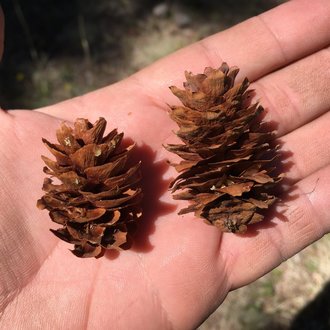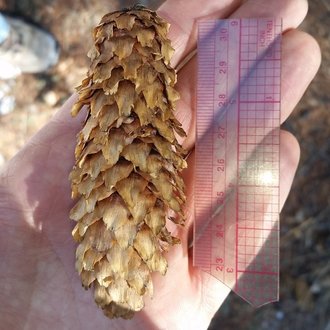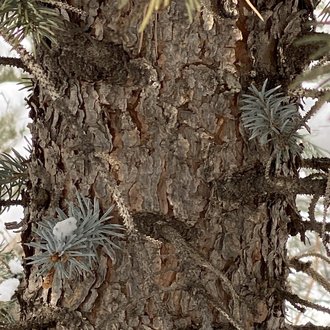Engelmann Spruce vs Blue Spruce
This guide is under construction and has not been published yet. It may have errors. When in doubt, double-check other sources for definitive ID.These species are often confused where their ranges overlap in the southern Rockies. They can be told apart by cone length, habitat, needle sharpness, and sometimes by color of foliage, twigs, and bark, although there is considerable variation of color.
Engelmann Spruce (Picea engelmannii) | Blue Spruce (Picea pungens) |
A large spruce of mid-to-high elevations in the Cascades and Rockies. | The most southerly spruce native to North America, blue spruce is found in the rocky mountains, but is also widely planted in landscaping. |
Averages much shorter cones, usually under two inches. Photo © Patrick Alexander, Public Domain. | Averages much longer cones, usually around three inches. Photo © aiwendil, Public Domain. |
Twigs hairy, most evident on new growth. Photo © Don Loarie, CC BY 4.0. | Twigs not hairy. Photo © Rod, Public Domain. |
Bark of mature trees often reddish, scaly. Photo © CK Kelly, CC BY 4.0. | Bark of mature trees gray and slightly more furrowed (with longer vertical cracks); red color, if present at all, usually limited to inner layer only visible in cracks. Photo © Tamberly Conway, CC BY 4.0. |
References & External Resources
These short lists show only links helpful for ID. For a complete list of references and resources also covering other aspects of ecology, visit the links section of the full article on each plant, which is the first entry here.








